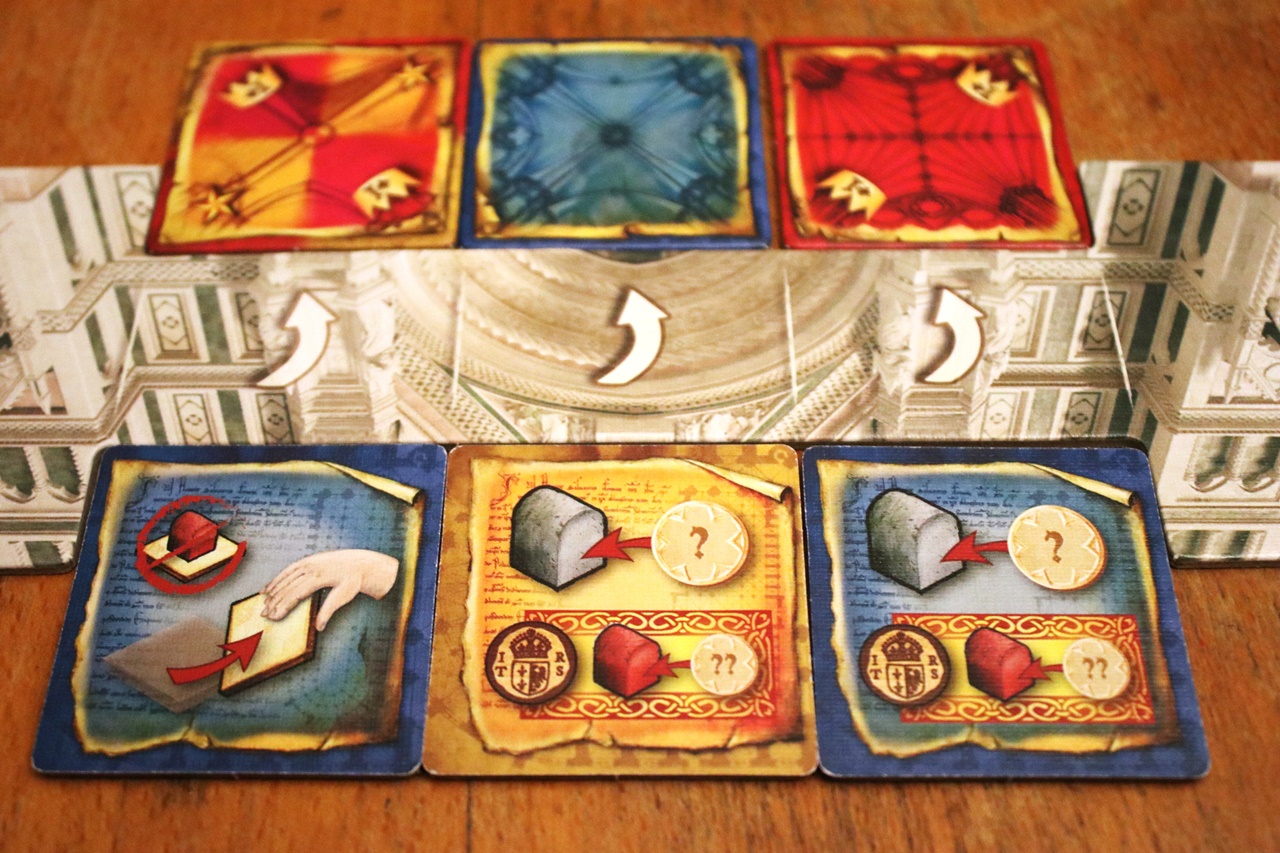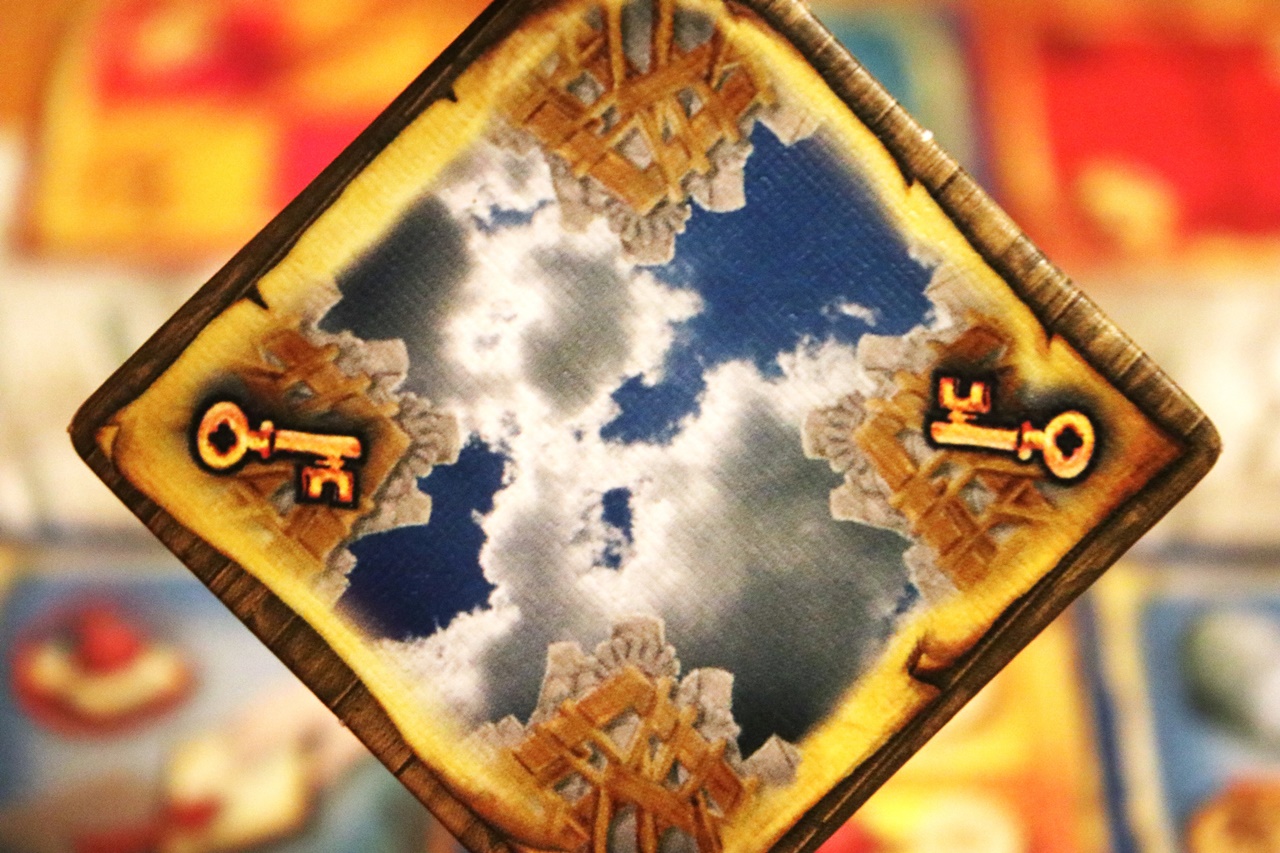Basilica is a two-player tile game that some may associate with the previous 2010 release. This year’s reissue has gained a new publisher, logo and refreshed components. Replaced, inter alia, little climatic cubes for wooden builders’ risers and a very nice insert was added. And although I did not like the graphics in particular, it cannot be denied that it is well suited to the medieval theme.

How to become the queen’s chosen one?
The preparation consists in distributing pieces and tokens in selected colors to the players, and one wooden coin each. Place the board in the middle and, as shown in the picture, place three tiles in the recesses on each side – one face up, i.e. with the vault visible, and on the other side, with orders. Next to the scoring track, there are wooden pieces – one from each player and the queen. The monarch will move whenever a vault tile with a crown symbol is built. After it enters the 10th, 20th and 30th spaces, players will count their points and then remove the top two rows of their tiles, builders, tokens, and scaffolding. Each person moves the remaining part of the constructed basilica towards the board in an unchanged position.

You must perform three actions on your move. We can choose an open store and place it on our side of the board, place a builder on a tile that has just been built, or execute an order. Please note that the second option is only available immediately after the first. In addition, we can perform moves in any order and number, e.g. execute an order three times or expand the basilica twice and use the builder once. When we take the shop, the order lying on the other side – turn it over and place it in an empty place, and fill the gap in the orders with tiles from the draw pile.

Our play area is limited by the width of the board, so a row can have a maximum of five tiles. Then we can only add on lower levels. The areas of the same color, where our pieces stand, count for the scoring, so we have to take care not only of the colors, but also of the employees. The person with the most builders on a given color scores points for the number of tiles, and the one with the fewer – for his workers. The game ends when the queen starts the scoring three times or when the tile pile is exhausted a second time, which also triggers a third scoring.

Architects’ duel
Basilica is an inconspicuous board game that I had a lot more fun than I expected. Initially, it was a simple puzzle, in which I tried to make the best use of two-color shops belonging to both color areas. After a few calm movements, the orders began to be obeyed. First those that benefited me, and then those that disturbed my opponent. Thanks to them, we can move builders, remove selected fragments of the vault, block the optimal movements of the opponent with scaffolding or improve our employees.

It was more enjoyable with each game. While the randomness in placing tiles next to the main board can frustrate the plans, we still have other moves available. In addition, a short game of less than an hour allows you to play in the next game. Although the choice was even limited to three actions, the turns were extended due to attempts to figure out the optimal move.
Basilica should appeal to fans of simple but thought-provoking tile games where scoring points is as important as interrupting your opponent. It will be successfully played not only by adults, but also by children, who will learn to plan and accept the opponent’s negative decisions during the game.

